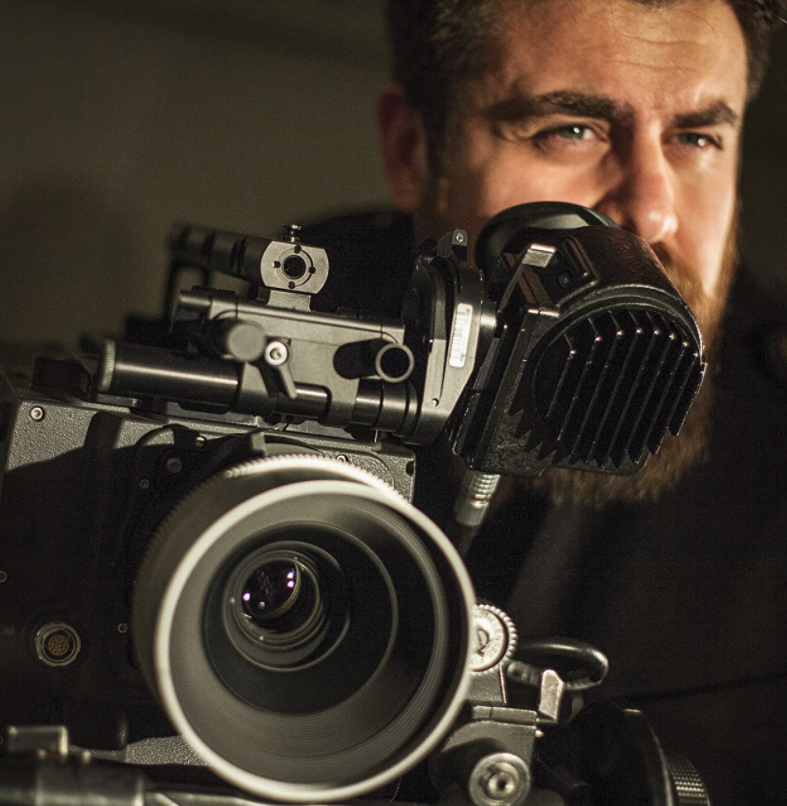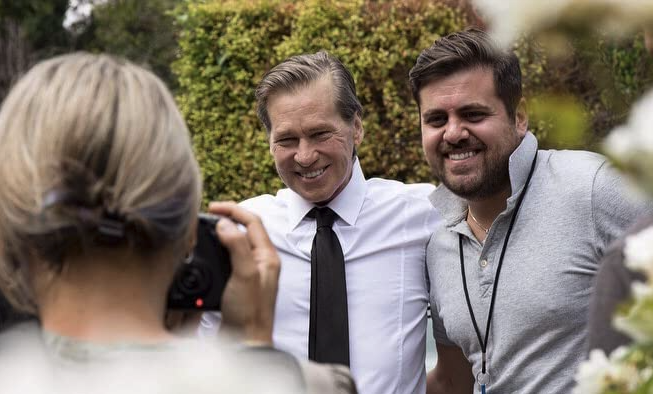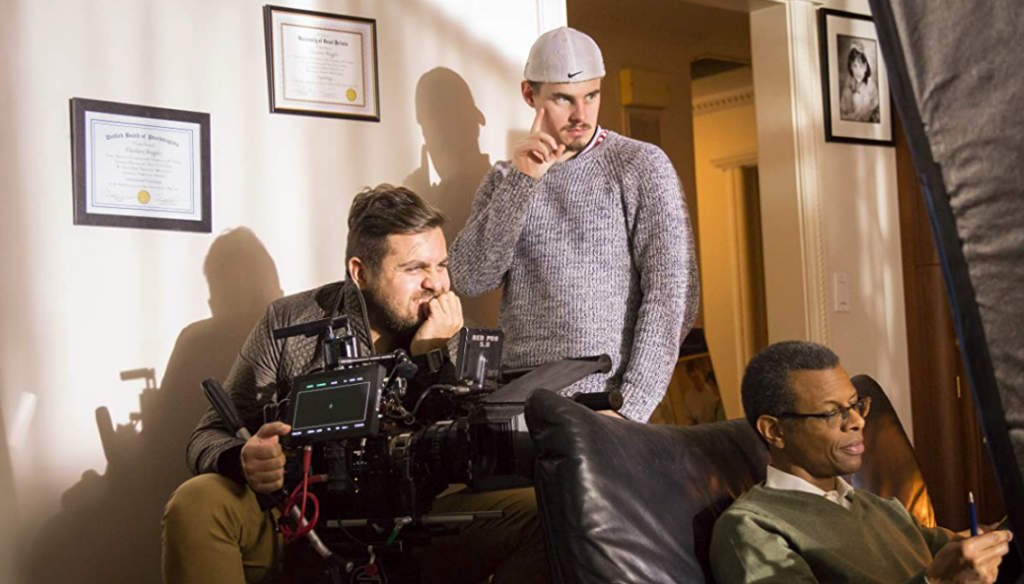Iranian-born Naeem Seirafi got his first taste of being on set when he was 19 years old and quickly began to realize that the world of cinema was where he belonged. His most recent work as director of photography includes In This Gray Place and 1st Born starring Val Kilmer and Denise Richards. Seirafi attended the NYFA’s inaugural MFA Cinematography class in 2011 and has since joined the International Cinematographers Guild (IASTE Local 600).
NYFA had the opportunity to catch up with the cinematography alum to joining the International Cinematographers Guild, his advice to incoming students, and what work is really like behind the camera.

New York Film Academy (NYFA): First, can you tell us a bit about yourself, where you’re from, and what brought you to New York Film Academy?
Naeem Seirafi (NS): I was born in Iran, and I’m currently a US Citizen. I went to engineering school in Iran while I was establishing a name as a set photographer in the Iranian cinema. My first professional set experience was in 2003 when I did my first feature film as a set photographer at the age of 19. In 2010 when I came to the US, I knew it was time for a bigger challenge. I started looking up film schools in LA immediately after my arrival. I was looking for a program that was focused on cinematography and had the most hands-on experience. New York Film Academy became my top choice, and I’m really happy about the decision I made.
NYFA: Why have you decided to focus on cinematography?
NS: My dad is a photographer, and as a kid, I always had the privilege of playing with his cameras, lenses, and unlimited rolls of 35mm film. There was always something unique about taking a picture, making sure to get all the technical aspects right, and at the same time try to tell a story in one frame. When I was 18, I started my professional career as a set photographer. A couple of years later, the director I was working with on his feature film, asked me to start thinking about making a career switch to cinematography. He mentioned that he liked my compositions, choices of lenses, color grading, and framings better than what his cinematographer was doing at the time. I knew it wasn’t an easy task but I also knew that it’s not impossible. My goal was to finish engineering school and make this switch after I arrive in the United States.
NYFA: How did your career change after joining the IATSE Local 600 guild?
NS: From the moment I started my career as a cinematographer, I realized that I need to belong to a bigger family of filmmakers who have been doing this for decades. By joining ICG (International Cinematographers Guild), I’m now assured that I can have a future in the film industry. The rights, wages, health plans, overtime rules, and any other musts that can go missing in film productions, are always there. I also knew that in order to be able to accept offers from an IATSE affiliated project, I need to be an active member. In general, it’s always good to have a union behind you.

NYFA: Can you tell us about the features you’ve DP’d on?
NS: In 2019, two of my feature films got released on major VOD networks. One is called In This Gray Place, a drama suspense genre that was shot in one location. Aleksander Ristic, Rudi Womack (my fellow NYFA alumni), and I decided to make a feature film in a garage which we used to build our main set, a bathroom. We’ve worked on multiple projects together, and I’m glad our latest collaboration worked out really well.
My other feature film is called 1st Born, starring the iconic actor Val Kilmer, with Robert Knepper, Tom Berenger, Denise Richards, and Taylor Cole. It’s a fun comedy project we shot here in LA. This movie also was shot mostly in sound stages with limited shooting days.
NYFA: How is your process different when shooting a feature vs shooting a short film?
NS: No one would think this but sometimes shooting a short film is more challenging than shooting a feature film. When shooting a short film, you’re supposed to tell a story in a way shorter timeline compared to a feature film. Other than that, you might have limited equipment, crew, number of days, and even access to the locations you’re using. I’ve shot 24 short films so far, and I really enjoyed working on every single one of them. At the end of the day, it’s all about who you are collaborating with.
On the other side, when shooting a feature film, you have more time to visualize what’s written in the screenplay. By the time I finish reading the script for the first time, I’ve already shot it once in my head by visualizing it scene by scene. That’s also when I know if I would want to work on the project or not. As a cinematographer, I’m looking for projects that are challenging, and I can bring more dynamics, visuals, and creativity to the table. A bigger and more professional crew would certainly ease the process of making a feature film. Unfortunately, I had to turn down two projects last year.

NYFA: What other projects are you working on or do you plan to work on?
NS: At the moment I’m in the late development stages of 2 feature films. One is called My Favorite Season and it was my first ever large-format movie. It was shot on Alexa 65 and Prime DNA lenses, and the same package will be used for the feature version.
My second project is called The Bishop’s Man. It’s a drama based on the best-selling novel, and that is as much information as I can give at the moment.
NYFA: What did you learn at NYFA that you apply directly to your work?
NS: Almost everything I needed to start my career as a cinematographer, I learned at NYFA. Thanks to Michael Pessah who was running the cinematography program at the time, we were able to practice and learn a lot of basics, and techniques, especially on 35mm film. There is a lot that you can learn in film school, that you may not be able to learn on a film set. There is no margin for mistakes and errors on a real film set, especially if you’re the head of your department. At the end of the day, it’s all up to the students, to decide how much and what they want to get out of the film school. Learning is a never-ending process in our careers.
NYFA: What advice would you give to students just starting out at NYFA
NS: As I said, it all depends on the student to make the most out of the program they’re attending. You can learn from every single moment and person while at school, even your classmates. NYFA is a big nationwide and worldwide family. They should take advantage of this opportunity. While you’re a student, there are a lot of open doors, resources, equipment, and people who are willing to help you. Even a lot of rental houses, studios, and post-production companies would help you as a student to make your movie. I’m sure you’re going to miss all that once you are out of school.
New York Film Academy would like to thank NYFA alum Naeem Seirafi for taking the time to share more about his career, what life is like behind the camera, and for sharing advice to incoming students and creatives alike.